The New Yiddish Kitchen
Gluten-Free and Paleo Kosher Recipes
for the Holidays and Every Day
Simone Miller
bestselling author of
The Zenbelly CookbookJennifer Robins
bestselling author of
Down South Paleo
The author and publisher have provided this e-book to you for your personal use only. You may not make this e-book publicly available in any way.
Copyright infringement is against the law. If you believe the copy of this e-book you are reading infringes on the authors copyright, please notify the publisher at: http://us.macmillanusa.com/piracy.
To bubbes everwhere, past, present and future.May your traditions continue to be passed down for generations to come. Mollie
MollieJennifers maternal great-grandmotherwas under 5 feet tall but sure made up for it with her lively personality. While born in Galveston, Texas, her parents immigrated from Eastern Europe and thus began the multiple generations of Jennifers Texas-born Jewish family!
 Jennie
JennieJennifers maternal grandmother (and daughter of Mollie), who was the eldest of 4 daughters.
She would tell you stories of making biscuits on Saturday mornings, her job as the oldest child. Later, Jennie created many more memories in the kitchen, especially on Passover, when extended family would gather around her dining room table with her piping hot matzo ball soup.  RoseSimones paternal great-grandmothercame from a family of thirteen Russian immigrants. Although she had no formal education, she was amazingly intuitive, hilarious and one of the worlds greatest storytellers. Her Bronx, NY, apartment was always filled with aromas of chickens roasting and challah baking.
RoseSimones paternal great-grandmothercame from a family of thirteen Russian immigrants. Although she had no formal education, she was amazingly intuitive, hilarious and one of the worlds greatest storytellers. Her Bronx, NY, apartment was always filled with aromas of chickens roasting and challah baking.  HelenSimones maternal grandmothergrew up in Poland with 6 brothers and sisters.
HelenSimones maternal grandmothergrew up in Poland with 6 brothers and sisters.
She emigrated to the U.S. 8 years after surviving the Holocaust, eager to begin a new life with her new family. Nothing makes her happier than holiday dinners surrounded by loved ones. At 97, she remains a positive, nurturing, loving source of inspiration.
The New Yiddish Kitchen is a labor of love born from complete desperation.
All right, thats a little dramatic.
But when we began our search for grain-free Jewish recipes for the holidays (and every day), we came up pretty short-handed. Sure there were Thanksgiving, Christmas, Halloween and Easter recipes galore but what about a grain-free challah for goodness sakes?! What about those traditional Jewish deli favorites? Where are the grain- and gluten-free counterparts for matzo ball soup, we ask?! Jewish inspired foods are staples to many Yiddish kitchens around the globe. They fill the bellies and hearts of the masses, many of whom arent even Jewish. But when you take away gluten, grain and dairy, those favorite Jewish foods are few and far between, to be honest. We love our baked goods and cream cheese, but without grain or dairy, celebrating with these foods gets a little complicated. Once we started brainstorming, we became passionately inspired to re-create some childhood (and adulthood) favorites.
We wanted to take the traditional holiday delights, as well as everyday Jewish staples, and make them edible again for those with food restrictions like ours. All the recipes in this book are entirely grain- and gluten-free and provide alternatives to dairy in the rare times they are used. For those cooking from a religious perspective, this book was also written with kosher laws in mind, meaning that most kosher laws should be observed as long as the ingredients you purchase comply. Our recipes are all also compliant with Paleo and gluten-free lifestyles, as they are entirely whole-foods based and free of grain, gluten, refined sugar and dairy. In The New Yiddish Kitchen, we have put together a menu for each one of the annual Jewish holidays to help you prepare as they approach, including a few Shabbat menus so that you can shake things up and rotate out recipes without the same old schpread. The recipes here are certainly delicious year round, so if you are craving matzo ball soup in the summer, be sure to make a pot! And quite honestly, when are latkes ever a bad idea? Exactly. Never.
If youve found yourself searching for gluten- and grain-free Jewish recipes and have come up empty handed, were here to put an end to your kvetching. Not Jewish? This is nothing to schvitz about, as we wrote The New Yiddish Kitchen from a cultural perspective, aiming to deliver all of your favorites, from deli fare to Israeli-inspired dishes. Lastly, we wrote this book with a lot of heart and spirit. Wed love to see this book passed down through the years (from bubbes to babies), put on display in your familys kitchen and splattered with schmaltz (a true symbol of honor). Our recipes are literally for life, and our hope is these recipes leave a lasting impression on your hearts while delivering healing foods to your bodies. Lchaim! Jennifer & Simone 
Where is the overlap between Paleo, gluten-free, grass-fed and kosher? They all seem to be such separate entities, if not completely unrelated at times.
Gluten-free as a general rule of thumb excludes gluten-containing grains such as wheat, barley and rye. It is the protein in these grains that can cause digestive upset or even systemic inflammation in some people. Paleo takes gluten-free a step further by excluding all grains, plus dairy, legumes, and refined sugar. And unlike gluten-free, the sourcing of the animal protein becomes much more of a focus. So, pasture-raised animals that are treated humanely and fed as nature intended are a focal point, in addition to local and organic produce when it is an option. Kosher, on the other hand, comes from the Jewish laws in which meats and other cooking ingredients must adhere to a specific set of rules in regard to the slaughter and preparation of the aforementioned.
So how do these all fit together? Is it possible to observe both the Paleo lifestyle and kosher laws all at once? It is! It might take a little more research, but it is certainly possible. There are some kosher farms with animals that are also raised humanely and eat off the land. These are ideal when observing both sets of constructs, but in the end you will want to find the balance and prioritize as you see fit in regard to your body and degree of commitment. With respect to other ingredients you might find in

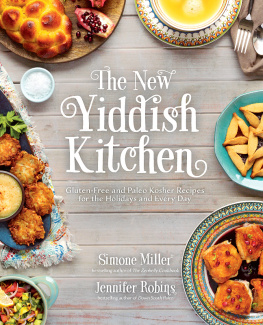
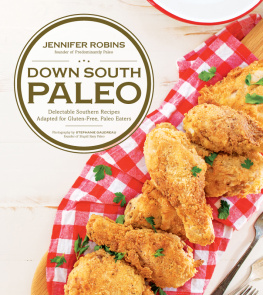
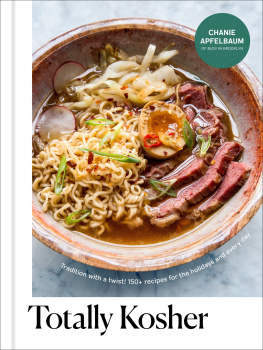
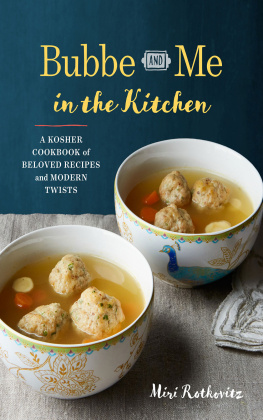
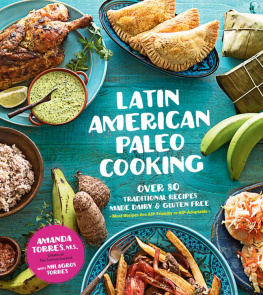
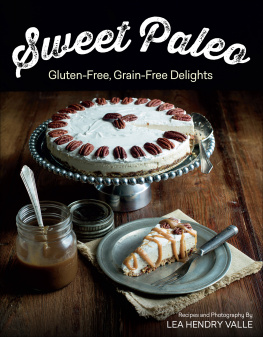


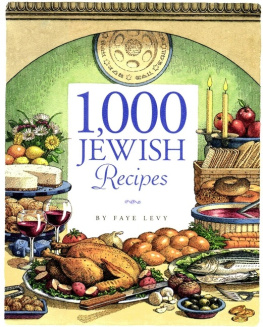

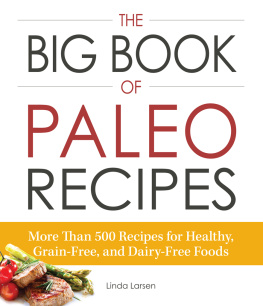

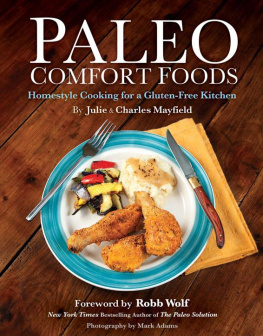


 The author and publisher have provided this e-book to you for your personal use only. You may not make this e-book publicly available in any way. Copyright infringement is against the law. If you believe the copy of this e-book you are reading infringes on the authors copyright, please notify the publisher at: http://us.macmillanusa.com/piracy. To bubbes everwhere, past, present and future.May your traditions continue to be passed down for generations to come.
The author and publisher have provided this e-book to you for your personal use only. You may not make this e-book publicly available in any way. Copyright infringement is against the law. If you believe the copy of this e-book you are reading infringes on the authors copyright, please notify the publisher at: http://us.macmillanusa.com/piracy. To bubbes everwhere, past, present and future.May your traditions continue to be passed down for generations to come. MollieJennifers maternal great-grandmotherwas under 5 feet tall but sure made up for it with her lively personality. While born in Galveston, Texas, her parents immigrated from Eastern Europe and thus began the multiple generations of Jennifers Texas-born Jewish family!
MollieJennifers maternal great-grandmotherwas under 5 feet tall but sure made up for it with her lively personality. While born in Galveston, Texas, her parents immigrated from Eastern Europe and thus began the multiple generations of Jennifers Texas-born Jewish family!  JennieJennifers maternal grandmother (and daughter of Mollie), who was the eldest of 4 daughters.
JennieJennifers maternal grandmother (and daughter of Mollie), who was the eldest of 4 daughters.  RoseSimones paternal great-grandmothercame from a family of thirteen Russian immigrants. Although she had no formal education, she was amazingly intuitive, hilarious and one of the worlds greatest storytellers. Her Bronx, NY, apartment was always filled with aromas of chickens roasting and challah baking.
RoseSimones paternal great-grandmothercame from a family of thirteen Russian immigrants. Although she had no formal education, she was amazingly intuitive, hilarious and one of the worlds greatest storytellers. Her Bronx, NY, apartment was always filled with aromas of chickens roasting and challah baking.  HelenSimones maternal grandmothergrew up in Poland with 6 brothers and sisters.
HelenSimones maternal grandmothergrew up in Poland with 6 brothers and sisters.